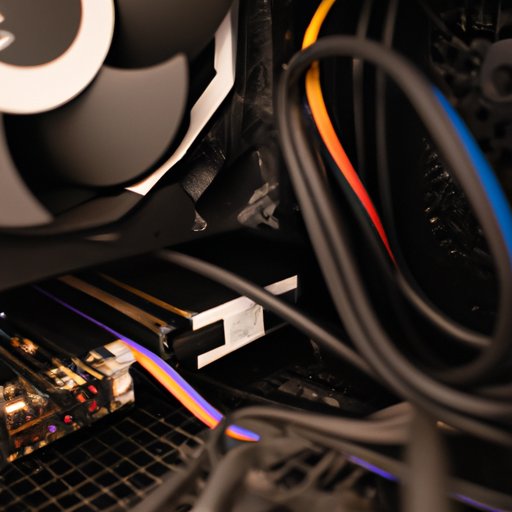
How to Build a PC: A Comprehensive Guide
Building a PC can be a daunting task, but with the right guidance, anyone can do it. Not only is building your own PC a great way to save money, but it also allows for customization and personalization that you just can’t get with pre-built systems. In this article, we’ll take you through everything you need to know about building a PC, from selecting components to troubleshooting common issues.
Step-by-Step Guide
The process of building a PC can be broken down into four main steps:
Selecting Components
The first and most important step in building a PC is selecting the right components. This includes the processor, graphics card, motherboard, RAM, and storage options. When selecting components, it’s important to consider compatibility and how each piece will interact with one another.
Assembling the Components
Once you have all the necessary components, it’s time to put everything together. This involves preparing the case, installing the motherboard, CPU, RAM, and other components. While it may seem daunting, most components are designed to fit together easily, and most cases come with an instruction manual.
Wiring and Cable Management
Once you have all your components installed, it’s time to connect everything together and manage the cables. This includes attaching power supply cables and organizing wiring to improve airflow and reduce clutter.
Installing the Operating System and Drivers
Once everything is assembled and wired, it’s time to install the operating system and drivers. This involves setting up the BIOS, installing Windows, and configuring drivers for all components.
Component Selection
One of the most important aspects of building a PC is selecting the right components. Here are some of the things to consider:
Importance of Compatibility
When selecting components, it’s important to consider compatibility. Not all components work well together, so it’s important to do research and make sure all the pieces will work as intended.
Processor
The processor is the brain of your computer, and it’s important to choose one that fits your needs. When selecting a processor, consider both the specifications and socket type. Make sure the socket type matches the motherboard you’ll be using.
Graphics Card
The graphics card is responsible for rendering images and video. When selecting a graphics card, consider how you’ll be using your computer. Different GPUs perform better for different tasks, such as gaming or video editing.
Motherboard
The motherboard is the backbone of your computer that connects all the components together. When selecting a motherboard, consider processor compatibility, expansion options, and port availability.
RAM
RAM, or Random Access Memory, is responsible for storing frequently used data for quick access by the processor. When selecting RAM, consider performance and compatibility. You should also decide between DDR3 and DDR4, depending on the age and compatibility of your CPU and motherboard.
Budget Builds
Building a PC doesn’t have to break the bank. Here are some tips for building a budget-friendly PC:
Importance of Budgeting
Setting a budget is important to make sure you save money without sacrificing performance or quality. Determine what you can spend and look for components that fit your budget.
Affordable Components
There are a variety of affordable components available that don’t sacrifice performance. Look for options that fit your budget for each aspect of your build.
Used Parts
Buying used parts can be a great way to save money without sacrificing quality and performance. Just make sure to buy from a reputable seller and test the components before installation.
Troubleshooting
Even with the best planning and preparation, issues can arise during a PC build. Here are some common problems and solutions:
Common Problems
Some common problems during a PC build include parts not fitting together, hardware failures, or software installation issues.
Solutions
Solutions to these issues can include troubleshooting hardware failures, compatibility errors, and configuring drivers. Research and patience are key to finding solutions to these issues.
Customization
Once you’ve built your PC, it’s time to customize and make it your own. Here are a couple of things you can do:
Modding Cases
You can customize the physical appearance of your build with case mods, lighting, and cooling options. Make your build stand out!
Overclocking
Overclocking, or increasing the performance of your components beyond their original specifications, is another way to customize your build. However, be aware of the risks and benefits of overclocking before attempting.
Conclusion
Building a PC can be a fun and rewarding experience, and with this guide, you should feel confident in your ability to accomplish it.




